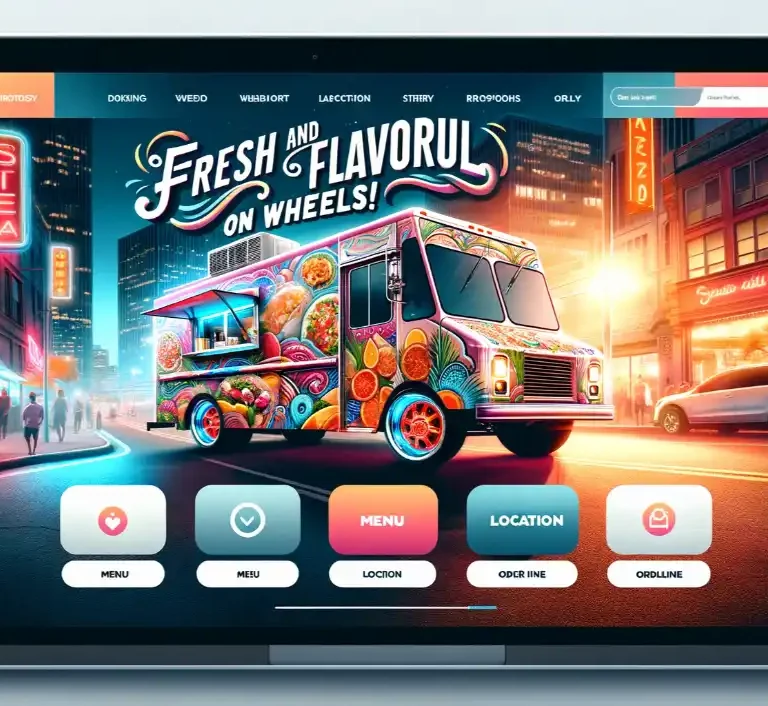How to Write a Restaurant Business Plan
Welcome to your first steps towards opening your own restaurant!
This blog post will serve as your comprehensive guide to understanding the process and significance of writing a restaurant business plan. Think of it as your roadmap, outlining your goals and the strategies to achieve them.
“Why is a business plan important?” you might wonder. Imagine embarking on a road trip without a map or GPS. It would be quite challenging, right?
Similarly, starting a restaurant without a plan can be equally daunting.
The Importance of a Restaurant Business Plan
A restaurant business plan is your secret recipe for success. It provides a clear vision for your business, aids in informed decision-making, helps with financial planning, attracts investors, and enables you to address potential risks. Here’s how it accomplishes these goals:
- A Clear Vision: Your business plan articulates your vision, providing a clear idea of your restaurant’s future and the steps needed to reach it.
- Smarter Decision Making: With a well-defined plan, making informed decisions about your restaurant becomes easier, whether it’s about menu selection, staffing, or location choice.
- Financial Planning: Your restaurant business plan serves as a tool for effective financial planning, allowing you to project sales, costs, and profits while managing cash flow efficiently.
- Attract Investors: In case you need external funding, a well-prepared business plan can impress potential investors or lenders, essentially acting as a project proposal.
- Mitigate Risks: Your business plan helps identify potential risks and formulate strategies to mitigate them.
A restaurant business plan is more than just a document; it’s a powerful tool that can turn your dream into reality.
How to Write a Restaurant Business Plan
Creating a restaurant business plan may seem daunting, but with the right approach and guidance, it can be simplified. In the following sections of this blog post, we’ll provide you with a step-by-step guide, essentially a plan template, to set your restaurant up for success.
Stay tuned! You’re embarking on an exciting entrepreneurial journey, armed with a solid plan and a hunger for success. Just like cooking a great meal, crafting a successful restaurant business plan requires time, patience, and a dash of love for what you do. Let’s get started!
Creating a Winning Restaurant Business Plan: A Detailed Walkthrough
Starting a restaurant may seem intimidating, but a well-crafted business plan can pave the way for success. In this guide, we will break down each component of a restaurant business plan, offering step-by-step guidance to create a robust blueprint for your venture.
Executive Summary: Your Restaurant’s Handshake
The executive summary serves as your restaurant’s introduction to potential investors, partners, and customers. It should include:
- Company Description: Introduce your restaurant, its location, and the cuisine it offers, painting a vivid picture of your venture.
- Problem Statement: Identify the gap your restaurant aims to fill, whether it’s a unique culinary offering or a distinctive dining experience.
- Product Line: Describe the delicious dishes and refreshing beverages on your menu.
- Marketing, Management, and Ownership: Provide an overview of your marketing strategy, leadership team, and ownership structure.
- Financial Plans: Offer a snapshot of your funding needs and financial projections (a more detailed analysis follows).
- Unique Selling Proposition (USP): Highlight what sets your restaurant apart, whether it’s a secret recipe or a unique ambiance.
- Mission and Vision: Conclude your executive summary with your restaurant’s mission and vision to clarify your goals and aspirations.
Company Description: A Deeper Dive into Your Restaurant
The company description provides a more detailed look at your restaurant, including:
- Company Formation Information: Share the backstory of your restaurant’s inception.
- Founders: Introduce the culinary visionaries behind the restaurant and their roles.
- Location and Markets Served: Detail your restaurant’s location(s) and target customer demographics.
- Current Status and Stage of Business: Explain whether your restaurant is in its early stages or if you have plans for expansion.
- Notable Achievements: Showcase any awards or milestones.
- Legal Standing: Explain your restaurant’s legal structure, whether it’s a sole proprietorship, partnership, or corporation.
- Short-term Goals: Outline your plans for the upcoming year.
Market Analysis: Understanding the Culinary Landscape
The market analysis section offers insights into the competitive landscape of the restaurant industry, including:
- Industry Overview: Provide an overview of the restaurant industry in your region, including trends and growth rates.
- Target Market: Describe your ideal customer, their dining preferences, and habits.
- Competition Analysis: Analyze your competitors’ strengths and weaknesses, highlighting how your restaurant differentiates itself.
- Market Test Results: Share results from any market tests you’ve conducted and their implications.
- Pricing: Discuss your pricing strategy and how it compares to competitors.
- Market Size and Trends: Estimate the size of your target market and identify notable trends.
- SWOT Analysis: Conduct a SWOT analysis (Strengths, Weaknesses, Opportunities, Threats) to assess your restaurant’s market position.
- Marketing Channels: Explain how you plan to reach your target customers, whether through social media, word of mouth, or traditional advertising.
Establishing Your Team: Organization and Management
In the realm of your restaurant’s operations, it’s crucial to understand who holds the reins. This section, organization and management, delineates the structure of your restaurant and identifies key players, including:
- Organizational Structure: Define the division of labor in your restaurant, specifying who handles various tasks and responsibilities.
- Management Team: Introduce the individuals leading your restaurant, detailing their roles and responsibilities.
- Staff: Highlight the importance of your wait staff, inventory control manager, and others who contribute to daily operations.
- Board of Directors: If applicable, introduce the strategists steering your restaurant’s course.
- Consultants and Special Advisors: If you’ve enlisted external expertise, describe these experts and their contributions.
- Ownership Structure: Explain the ownership details of your restaurant, including who holds stakes and their proportions.
- Legal Structure: Specify the type of business entity you’re operating, whether it’s a sole proprietorship, partnership, or corporation.
Remember, creating a restaurant is a journey, not a sprint. However, with a robust restaurant business plan, you’re setting the foundation for success from the start.
Are you ready to turn your restaurant dream into reality?
Delving Deeper: Services or Products
As an emerging restaurant entrepreneur, it’s crucial to define your core offerings. What cuisine will your restaurant serve? What unique selling propositions set it apart? Whether you’re focusing on authentic Italian cuisine or conceptualizing a vegan-friendly café, consider your restaurant’s current development stage, menu ideas, and dining area aesthetics.
Don’t forget to outline your pricing strategy, menu testing, and future plans, such as introducing new menu items or offering delivery services. Your goal is to provide a clear picture of your restaurant’s offerings.
Strategizing Success: Marketing and Sales
In the modern restaurant industry, success relies on effective marketing. Start by reaffirming your brand’s mission, vision, value propositions, and positioning statement. Then, delve into what makes your restaurant an irresistible destination for food lovers.
Layout your marketing strategies, including the use of social media, email campaigns, and review sites. Analyze your competition to carve a unique niche, emphasize the importance of customer reviews, and plan ways to encourage positive feedback. Discuss your content planning strategy and allocate a budget for marketing activities.
Lastly, outline any future marketing ideas to attract and retain customers.
Securing the Future: Funding Request
A well-articulated funding request is crucial for any restaurant business plan. Begin by summarizing your current financial status, including income, cash flow statements, and balance sheets. Specify the current funding needs and future projections.
Clarify how the funds will be used, whether for capital expenditures, marketing, or operational costs. Detail your repayment plan and provide information about any collateral if you’re offering it for a loan. Discuss future financial plans, potential funding sources, and your exit strategy.
Peering Ahead: Financial Projections
Financial projections may seem daunting but are vital for your restaurant business. Start by presenting projected income and cash flow statements, along with a projected balance sheet for the initial 1 to 5 years. Include a break-even analysis to determine when your restaurant will start generating profits.
Ensure your projections are based on historical data and competitive benchmarks. Clearly state any assumptions made, discuss identified financial risks, and outline strategies for risk mitigation. Your financial projections should offer a clear understanding of your financial plans and expectations.
In conclusion, drafting a restaurant business plan may appear overwhelming, but it’s an essential step in your entrepreneurial journey. Take it one section at a time, and soon, you’ll have a comprehensive blueprint for your business.
Happy planning!






